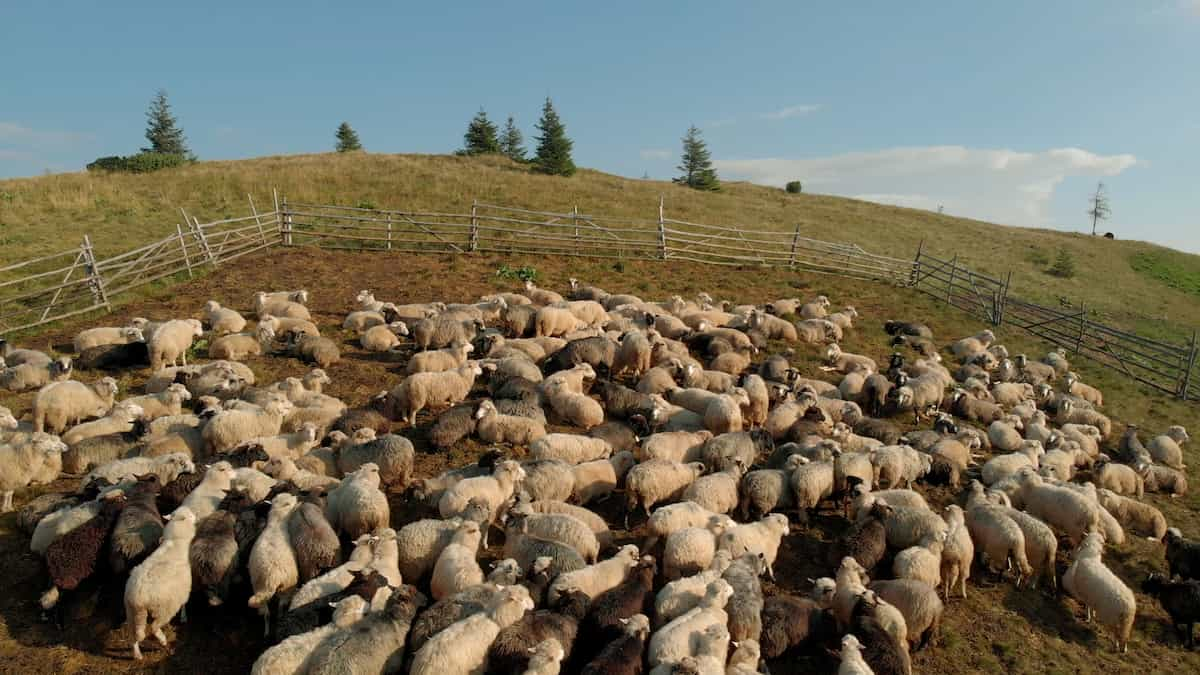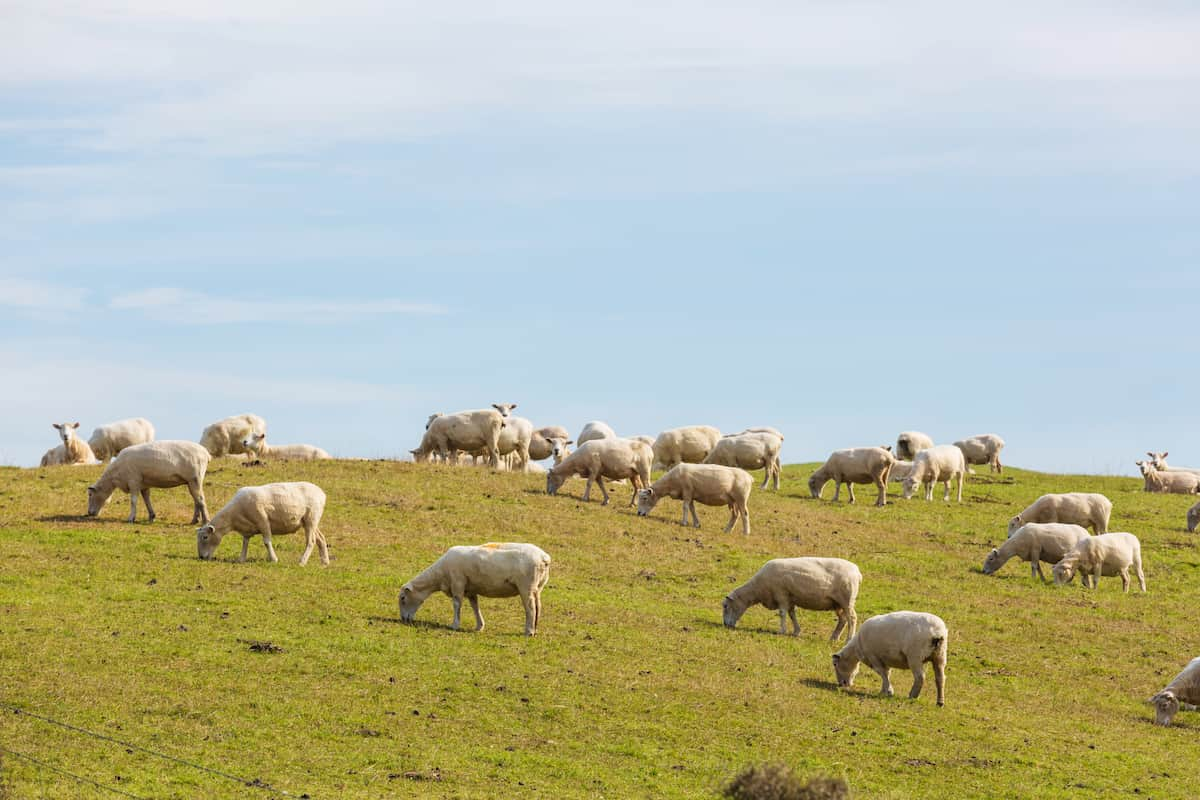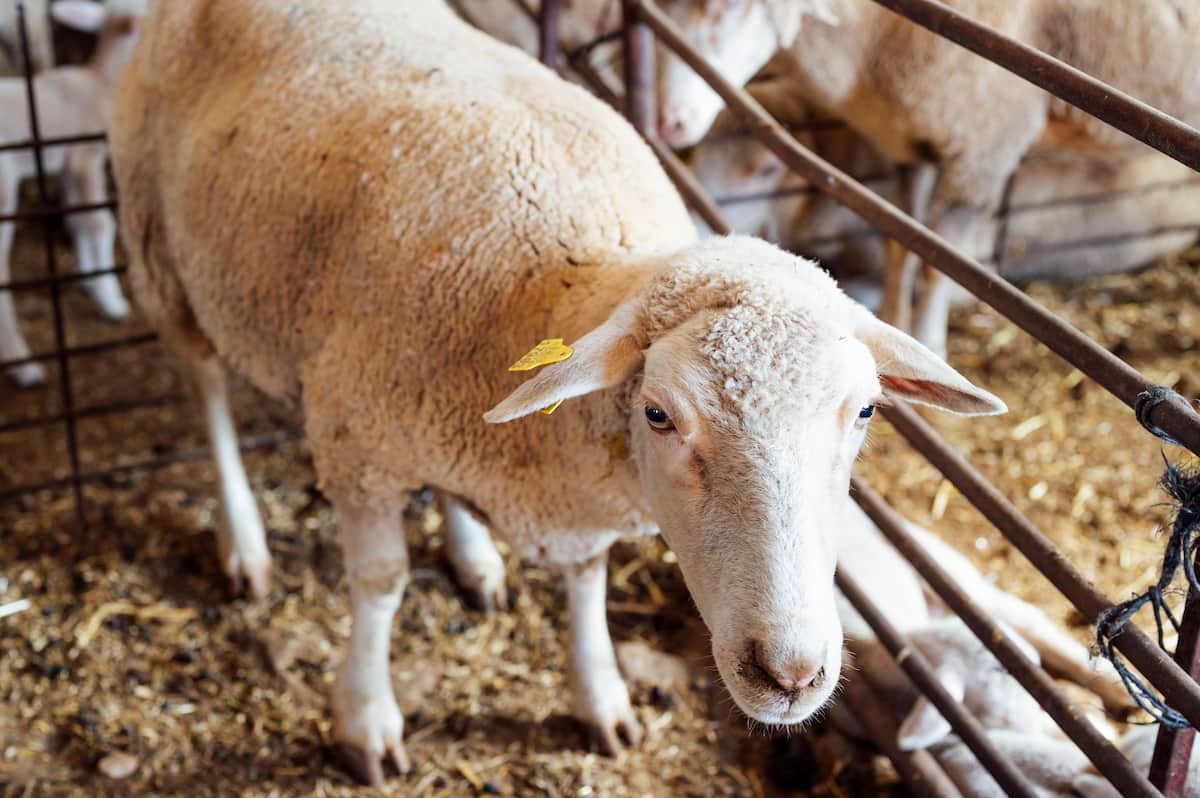Katahdins are not the best sheep breed to select if you intend to raise them for wool. It is, however, a great choice for farms that produce meat and milk. Sheep like this are resilient and easy to manage due to their cold hardiness. Katahdin sheep are known for being hardy, low-maintenance sheep that can adapt easily to various conditions.

In addition to their lambing ability, they produce lean and meaty carcasses. Land can even be managed with the help of these sheep because they are efficient. Typically raised for meat, they can be raised for milk as well. They are docile and easy to handle.
Katahdin Sheep Facts
History and Origin of the Katahdin Sheep Breed
In the mid-20th century, Katahdin sheep were developed for the first time. A farmer, geneticist, and innovator named Michael Piel understood that he wanted to create a truly unique breed of sheep. As a resident of northern Maine, Piel wanted to raise sheep that would serve more purposes than just producing wool and meat. He aimed to have sheep that ate all kinds of vegetation rather than typical forage grasses rather than spraying or mowing down overgrowth.
In earnest, he began researching hair sheep. He planned to breed ewes from Tunis, Suffolk, Hampshire, Southdown, and various African breeds. In the 1970s, Piel created a superb meat sheep that didn’t need to be sheared. He named them as Katahdin sheep. A cross between Wiltshire Horn sheep and the breed was later performed to improve their size and bone structure. For additional hair characteristics, Paul and Margaret Jepson of Vermont crossed their Katahdins with St. Croix sheep.
Physical Characteristics of the Katahdin Sheep Breed
- Like many bristle sheep, Katahdin sheep are highly adaptable to various climates and conditions.
- During cold weather, they remove their very thick winter jackets, which are shed later in the year.
- Heat and moisture are well tolerated by their smooth hair and other adaptable properties.
- A unique characteristic of Katahdin sheep is that they naturally resist internal parasites.
- In addition to producing superior lamb crops and lean, meaty carcasses, Katahdines are durable, adaptable, and low-maintenance sheep.
- Since they do not produce a fleece, they do not need to be cut.
- Medium-sized and efficient, they are trained in different management systems for service and production.
- Sheep and rams reach puberty early and live long, productive lives.
- A mature sheep usually has twins and sometimes triplets or quadruplets.
- Well-managed and selected flocks should yield a lamb yield of 200%.
- A Capricorn breeder can place large numbers of sheep during their first exposure cycle, as they are an aggressive breeder and generally productive throughout the year.
- A flock can lamb continuously throughout the year if it so chooses.
- A sheep has outstanding maternal abilities, lambs are often unaided, and lambs have plenty of milk.
- Lambs are usually born vigorous and alert; it is rare for them to be rejected.
- A weed or forage-based management system is ideal for the breed pasture lamb and forage-based management system.
- Katahdin’s hair coat can be any color or combination of colors, depending on its length and texture.
- When cold weather hardens and the day length decreases, it becomes thicker and elongated, usually consisting of coarse outer hair and fine wool fibers.
- This undercoat and some hair naturally fall out during the summer as the temperature and day length increase.
In case you missed it: Rambouillet Sheep Facts: Origin, Physical Characteristics, Size, Pros, and Cons

Advantages of Rearing Katahdin Sheep Breed
- Katahdin sheep do not need to be sheared annually or twice yearly, which is one of the most obvious advantages of raising them. A breed that does not require shearing is better if you do not focus on wool and create the setup for shearing annually.
- Despite not being 100% resistant to parasites, Katahdin sheep are much more parasite-resistant than most other breeds. The barber’s pole worm and other internal and external parasites resist Katahdin and other hair sheep.
- A Katahdin ewe’s excellent mothering instincts make her a highly sought-after breed. Sheep lamb easily, often successfully lambing on pasture without shepherd intervention, on their own. Upon birth, lambs tend to be alert and vigorous growers.
- The Katahdin ewe is good at lambing without assistance and produces a lot of milk, even though she often bears multiples when she lambs. In addition to their meat, ewes are often praised for their milk production, which is more than enough for their lambs.
- Ewes and rams are both known for their exceptional fertility. Before they become too old to breed, both reach puberty and can breed for a long time. Year-round fertile rams are aggressive breeders and aggressive breeders.
- Katahdin sheep are often used for land management because they were bred to graze brush under power lines. Many Katahdin producers describe them as more “goat-like” than other sheep breeds since they eat a lot of material that other sheep do not like.
- Last but not least, Katahdin sheep are easy to handle. As docile as they are, Icelandic sheep are easy to handle, unlike other more primitive breeds.
Disadvantages of Rearing Katahdin Sheep Breed
- The flocking instinct is the ability of sheep to follow one another and to herd together. If you are raising sheep on large pastures, this is a highly desirable characteristic. Predators pose a high threat here.
- A weakened flocking instinct, however, allows you to raise smaller groups of sheep, which is not possible with sheep with stronger instincts.
- These sheep don’t produce much fiber. As far as raising sheep for meat is concerned, this is not a problem. This is an important factor if you plan to raise sheep for fiber.
- Katahdin sheep are also less seasonal than other sheep breeds, which is something to remember when raising them. Therefore, you might not always know when your ewes have been bred. Lambs can be born in the fall or in the spring.
In case you missed it: Southdown Sheep Facts: Origin, Physical Characteristics, Size, Pros, and Cons

Conclusion
Raising Katahdin sheep has a few disadvantages, but these are among the hardest and easiest to raise. In selecting your ideal breed, this Maine native is the way to go if you are looking for a low-maintenance flock of meat producers.
- Feed Your Flock for Less: Top 10 Tips to Save on Chicken Feed
- Ultimate Guide to Ossabaw Island Hog: Breeding, Raising, Diet, and Care
- Hatching Answers: The Top 10 Reasons Your Chickens Aren’t Laying Eggs
- Eggs and Economics: Breaking Down the Cost of Raising Backyard Chickens
- Defend Your Greens: Proven Methods to Keep Iguanas Out of Your Garden
- Ultimate Guide to Cinnamon Queen Chicken: A Comprehensive Guide for Beginners
- Ultimate Guide to California Tan Chicken: Breeding, Raising, Diet, Egg-Production and Care
- Ultimate Guide to Marsh Daisy Chicken: Breeding, Raising, Diet, and Care
- 10 Types of Chicken Farming Businesses You Can Start for Profits